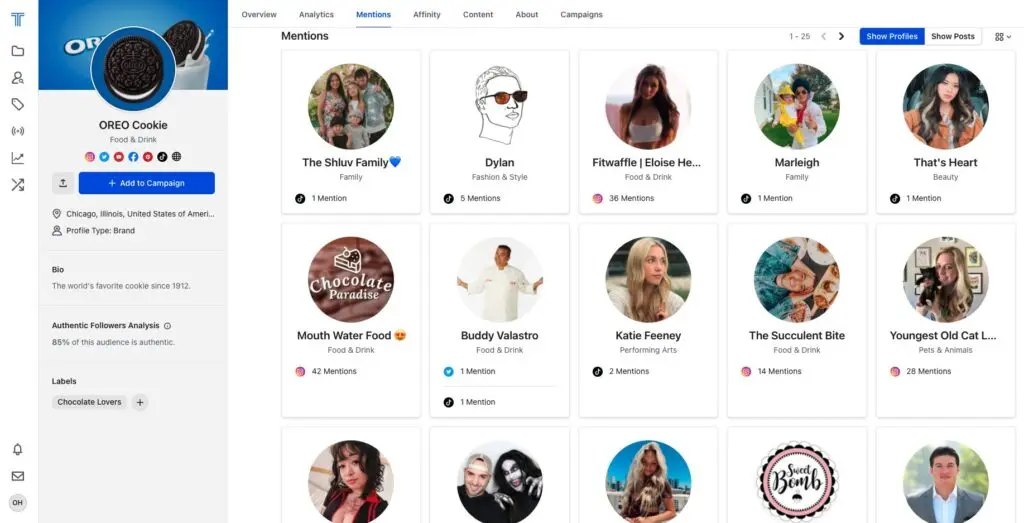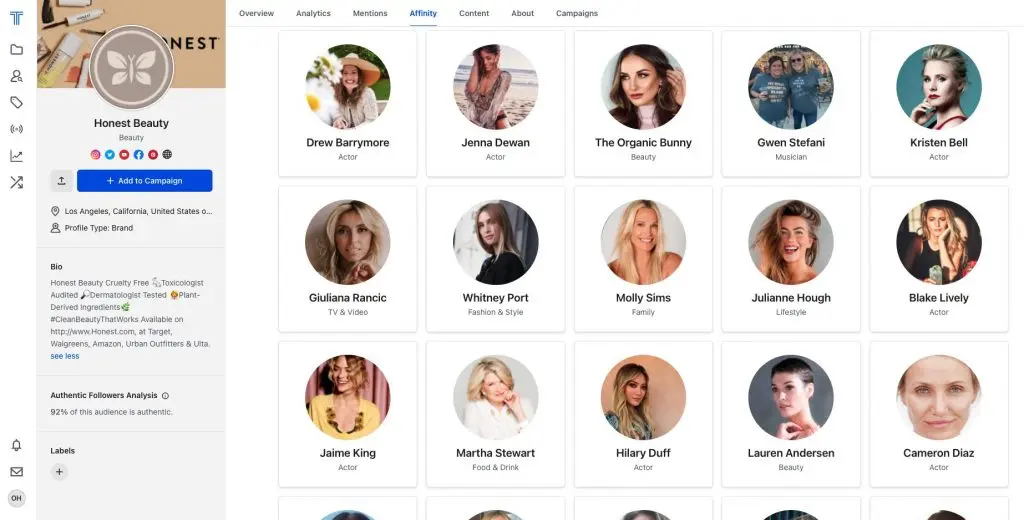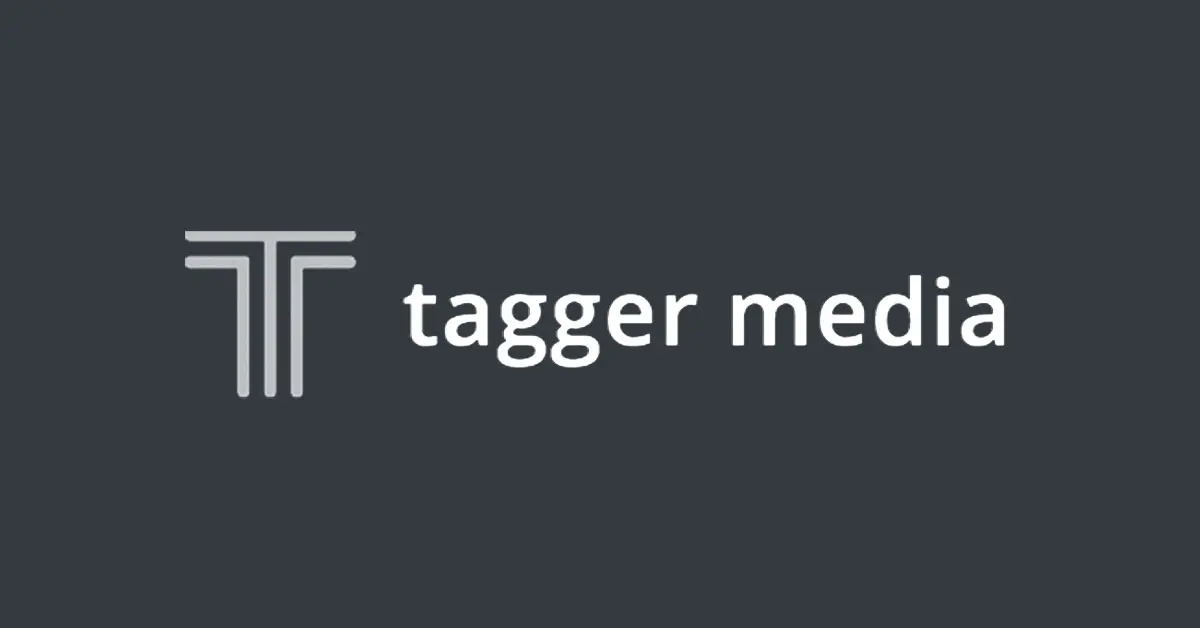
Founded in 2015 by Peter Kennedy, Tagger began life as a music recommendation engine, tracking social conversations and analysing fan preferences as the foundation of an “If you like X, then you’ll like Y” service. Once it became clear how much their algorithms and analytics could glean from these conversations, the pivot to influencer marketing became an inevitability. Besides, services like Spotify and Pandora were already doing quite well recommending music to its users—the consumer world didn’t really need any more of those. The influencer marketing world, on the other hand, seemed a bit starved for something beyond the simple discover-and-deploy tools that were (and are) everywhere.
Data is at the heart of every successful influencer campaign, but most platforms only focus on what you can find out about influencers and their audiences. Whether these data points are gleaned through algorithmic magic, or influencers opting into a platform, there’s still a limit to what you can do with the available information. And that’s where Tagger comes in. Tracking more than 9 billion social conversations resulting in an incomprehensible amount of points—all indexed, analysed, and searchable, by brands and agencies alike—Tagger’s approach to analytics is on another level entirely. To call it an influencer marketing platform is an understatement: Tagger is a fully fledged digital marketing research tool with few equals.
Yes, it’s also a straight-ahead influencer marketplace, home to over 6 million influencer profiles—and, of course, all the data that you’d want to accompany those profiles. Campaign management and reporting are both here, as well, giving brands a fine degree of control over their influencer efforts. Were Tagger just made up of these core functions—discovery, activation, management, and reporting—it would still be a best-in-class platform. But it’s the analytics and research capabilities that really set it apart, and which give brands a huge advantage before they’ve even executed their first influencer search.
Summary
Overview
Founded in 2015 by Peter Kennedy, Tagger began life as a music recommendation engine, tracking social conversations and analysing fan preferences as the foundation of an “If you like X, then you’ll like Y” service. Once it became clear how much their algorithms and analytics could glean from these conversations, the pivot to influencer marketing became an inevitability. Besides, services like Spotify and Pandora were already doing quite well recommending music to its users—the consumer world didn’t really need any more of those. The influencer marketing world, on the other hand, seemed a bit starved for something beyond the simple discover-and-deploy tools that were (and are) everywhere.
Data is at the heart of every successful influencer campaign, but most platforms only focus on what you can find out about influencers and, if you’re lucky, their audiences. Whether these data points are gleaned through algorithmic magic, or influencers opting into a platform, there’s still a limit to what you can accomplish when you’re limited to straight pull of data. And that’s where Tagger comes in. Beyond simply ingesting data and presenting it in easy-to-read formats, the platform relies heavily on social listening to give its customers a deeper understanding of the social waters they want to tread into.
Tracking more than 9 billion social conversations resulting in an incomprehensible amount of points—all indexed, analysed, and searchable, by brands and agencies alike—Tagger’s approach to analytics is on another level entirely. To call it an influencer marketing platform is an understatement: Tagger is a full fledged digital marketing research tool with few equals.
In its early years, it would have been fair to refer to Tagger as an influencer marketplace, home to over 6 million influencer profiles—and, of course, all the data that you’d want to accompany those profiles. Still, that would have been a simplification of the platform’s abilities, even then. Now, in the year 2022, that doesn’t really begin to cover it. It’s evolved to become an end-to-end suite of tools for influencer marketing, widely recognized as one of the best available. They’ve won several awards: Best Influencer Marketing Platform at the 2020 Digiday Technology Awards, Best Influencer Marketing Company in 2019 and 2020 at the Martech Breakthrough Awards, and this past July won the Gold at the Influencer Marketing Awards.
With all those accolades, you probably don’t need us to tell you any more about Tagger to convince you to check it out. But we’re going to do it, anyway, so keep reading.
Pricing
There aren’t any pricing guidelines on Tagger’s site, so we can’t give you very detailed information here. Really, the most helpful information we can give you is:
- Like most influencer platforms, this one is Software as a Service, so you’ll be paying a subscription fee for access.
- This is not software for a small business. Unlike your average influencer marketplace, Tagger’s service is incredibly robust. It offers more use and data than a small company would know what to do with. Their roster of clients includes big companies like Pepsi and Estee Lauder.
For detailed pricing, you’ll need to contact Tagger directly.
The Details
As mentioned—a couple of times—data is at the heart of everything you do with Tagger. It’s not through some web crawling algorithm that scrapes publicly available data. Instead, Tagger’s partnerships with all the major social channels allows them to pull in all the information (and “listen” to all the conversations) for any profile. As such, their database of profiles includes influencers and other brands alike, and there are over 6 million of them to search through.

Right from the beginning, looking through any profile will show you just how much you can learn as you click through influencers, content, and your competitors. It would be easy to find yourself going down the proverbial rabbit hole, as every piece of data and information links to more, which then links out to more, and so on. Brand profiles look just like influencer profiles on Tagger, so both give you deep and useful insights: Is their audience authentic? If it is, what sort of authentic humans are in that audience? Where are they? What topics are they talking about? Because of the social listening aspect of this, the information is a lot more reliable. When Tagger shows you an audience that’s into topics like Fashion, Health, or Food, it’s not just because they follow some accounts in that space. They’re actually talking about it (said another way: this is the stuff they engage with).
Because it provides the same kind of information for brands as it does for individual accounts, Tagger’s able to provide pretty granular comparisons as a way to find overlapping attributes, and to inform your own marketing strategies. Here’s what this looks like in practice: Let’s say your competitor’s social presences are performing better than yours. They’re growing at a steady rate and have consistent engagement. Tagger’s analytics will tell you more about the audience demographics, arming you with a clearer understanding of who you should be targeting. But then you can go a step further and compare these analytics to those of an influencer. Maybe you’ve got a list of potential candidates to work with but you’re not sure. By comparing each influencer’s audience with the brand’s, you can see which one has the most overlap (and will therefore be best suited to reach your desired audience).


The value of the analytics becomes really clear when you stumble across nuggets of information that defy your expectations. What does this mean? Again, an example of this in action will make it clear. When figuring out your target audience, it’s common sense to target people whose affinities match with your brand. An obvious example would be something like Xbox targeting people who are into Gaming to work as their influencers. That’s a no-brainer, and you don’t need software to tell you to do that. But with Tagger, it’s possible that they find out that, actually, relevant posts are getting a lot more engagement with audiences following Visual Art & Design influencers. It’s these sort of counter-intuitive revelations that make the platform so valuable.
All of this is the kind of research you’ll likely (and should) do long before you ever search for an influencer with Tagger’s discovery tool. Armed with all the intel you got from your research, you’ll find the search tool easy to work with. Through keyword searches and dozens of filters, it’s no problem to find, say, a food photographer in London with an audience of mostly males in their late 20’s that love pizza and Toyota’s hybrid cars. That’s weirdly specific, but it underscores the power of Tagger’s data and search tools—and how far you can take the idea of brand affinities. The platform’s data analysis engines give it the ability to “understand” an influencer’s followers enough that it can go and find “lookalike” audiences, pointing you to other potential influencers.

Another way that Tagger shows its worth is in the way it streamlines communication. For the kinds of large brands that use it, this is extremely important. The first reason is that big brands often don’t need to go out and search for new influencers; everyday, they’re getting tons of unsolicited requests to work with them. For the person on the receiving end of the DMs and emails, it’s a lot to keep up with. Not just for responding, but also for vetting each one. By creating a public facing portal with Tagger, brands can have a single interface for handling all these incoming requests while also including an application that asks the kind of pre-qualifying questions that will save everyone a lot of time. But Tagger doesn’t just make it easier to receive mail, it also greatly simplifies sending it, too. It features a way to create customizable templates that make sending individual and bulk messages quick to deploy, with all the hallmarks of a personal message. And any messages sent from the platform are sent as emails from your actual email account, ensuring that messages don't get caught up in a spam filter (unless, of course, your email address is something like [email protected]).
The management dashboard is chock full of ways to organize all your marketing efforts—influencers can be organized into groups, even within the same campaign. This is very helpful for when there are multiple kinds of content being produced, or you’re publishing across several platforms, or you want to categorize the influencers by reach—really, you can organize them any which way you like and quickly call up the entire group to track their status in the campaign. You can also track the progress of content as each piece is submitted, and all along the way—from influencer activation through publication—Tagger’s customizable workflow tools ensure that everyone who needs to be involved is. Whether an agency’s waiting for brand approval on an influencer or their content, or the influencer needs to submit draft revisions, or teams need to discuss things internally, the platform’s handling of users, teams, and roles keeps information flowing freely to the people who need to see it. The goal here was for teams to operate efficiently and transparently, and they’ve certainly achieved it.

Of course, with a platform that’s this meticulously thought out, it shouldn’t be surprising to know that it includes a solid reporting function, too. Just like with search, you can dive deep into your campaign posts to see how it all went. All content, including Stories, is sucked into the platform, giving a single point to analyse everything about a campaign. Engagement, conversions, ROI, CPE, audience data—it’s all here. This all sits alongside individual performance stats for each influencer, giving marketing teams all they need to identify their successes and repeat them, then find their failures and avoid them.
.
Conclusion
There’s a lot more to what Tagger Media can do, and it would be quite an effort to try and list them all out here. What’s important is what we’ve highlighted here—namely that Tagger is one of a few platforms that’s looking to go beyond what we’ve all come to expect by now.
Maybe you’d get a big pool of influencers to choose from, but finding them was hard. Or you could find them easily enough, but it was a pain in the butt to reach out to them all. Or maybe you’d be able to see tons of data, but there wasn’t a great way to manage the influencers. Or maybe there was a good management interface, but it was overkill because the platform didn’t have that many influencers to begin with.
Tagger Media puts all of these concerns in the rearview. And it does that on a platform hosting over billions data points connected to over six million influencers (and their followers). Data is at the heart of it all, data that fuels results. The results then unearth more data, and the new data fuels more results. Maybe “marketplace” isn’t the right word. Maybe “ecosystem” is a better fit. Tagger comes off less as a tool, and more of a social data habitat.
Frequently Asked Questions
What does Tagger do?
It will be an understatement to call Tagger an influencer marketing platform. It takes analytics to a whole new level. It is a full-fledged digital marketing research tool. The services offered include: influencer search and discovery, campaign management, influencer marketplace and third-party analytics. In short, it has all the features of a marketplace (you can search for influencers, create campaigns and manage their content), but there are so many other features too. Few other tools can do what it does!
What advantages does Tagger offer?
Its analytics and research capabilities really set it apart from the competition. Thanks to its analytics, businesses that use Tagger already have a massive advantage even before they have completed their first influencer search. They concentrate on psychographics. So, instead of simply indexing relevant data, it is built on social listening that analyzes what people are chatting about in order to get a better understanding of their interests and likes.
What are some of the cons of using Tagger?
Data is at the heart of Tagger. It is what fuels the results. The results then also uncover more data and the new data leads to more results. You get the picture. While it’s not a con per se, it can be a hurdle to the platform’s efficiency. It’s easy to find yourself getting sucked in by all the available data as every piece of data just leads to more data. This is particularly true for when you are using Tagger to complete competitor research.
How much does Tagger cost?
Tagger does not share their pricing plans on their website. If you would like a detailed breakdown of how their pricing works, you will have to contact Tagger directly. That being said, like the majority of influencer platforms, you will have to pay a subscription fee to be able to access their services as it is a Software as a Service (SaaS) company. Also, as its services offered are really robust, their software is not aimed at small businesses.
Is Tagger a good choice for a small business?
The services that Tagger offers are extremely robust. It provides more use and data than small businesses would know what to do with. So, Tagger is not a good choice of software for a small business. Their clients include big companies like Pepsi, Estee Lauder, HBO, Omnicon and Ralph Lauren.
Tagger Media
-
Features
-
Ease of Use
-
Reporting


